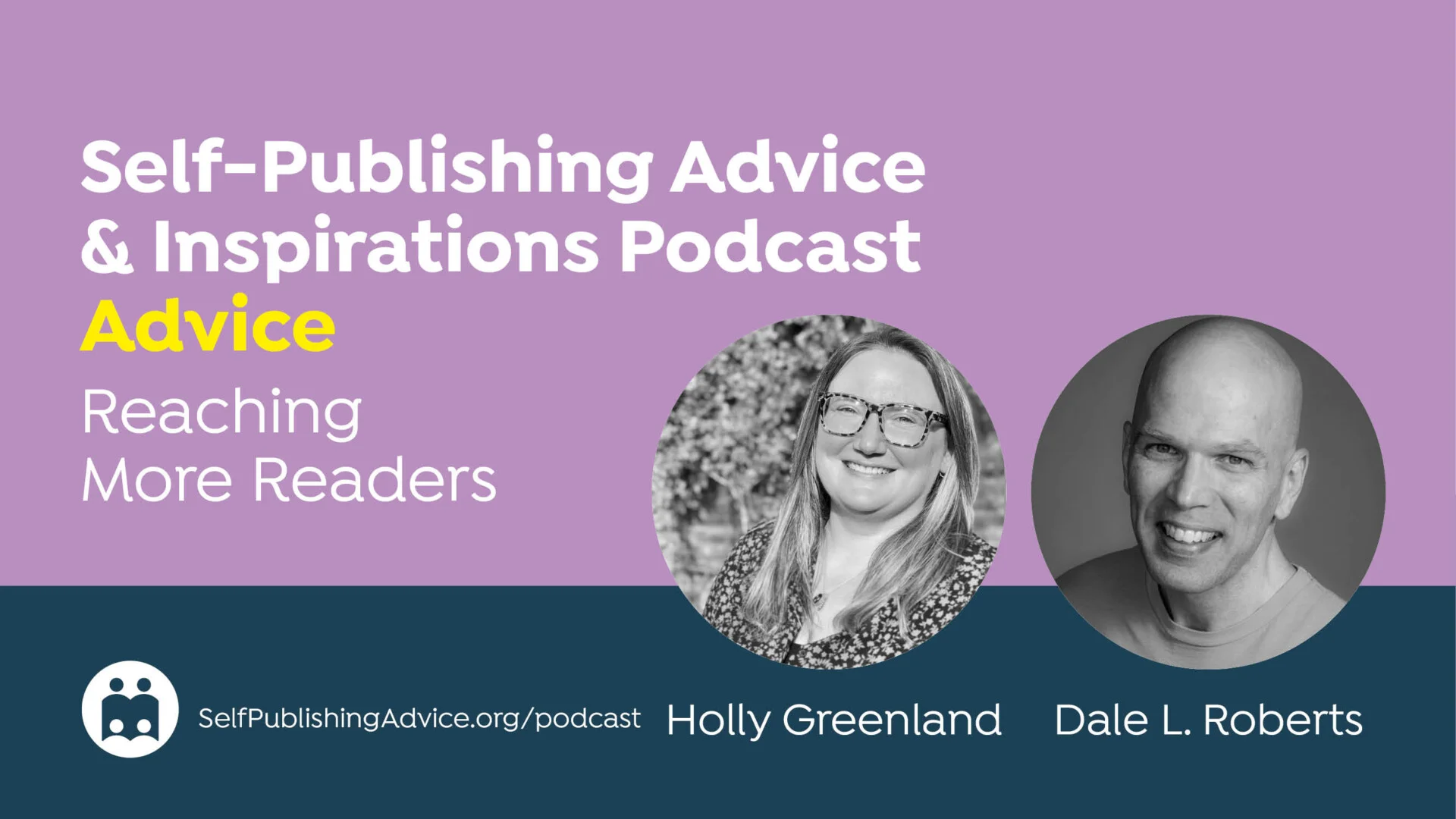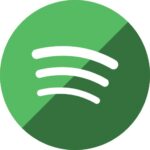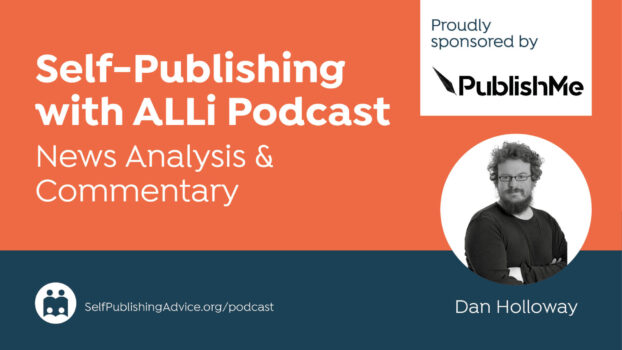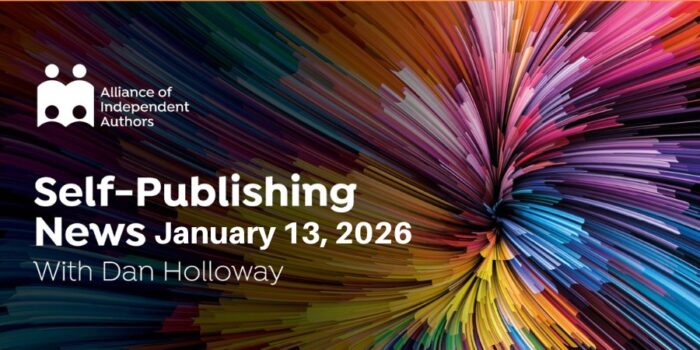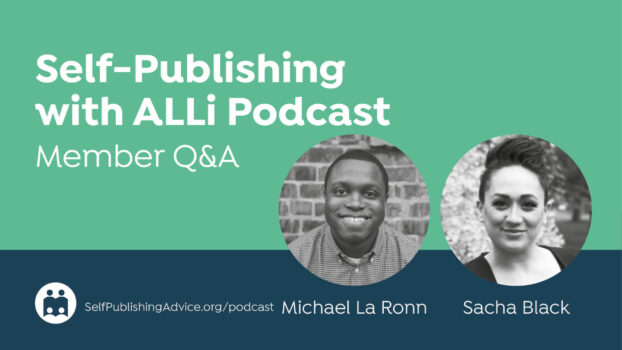In the Reaching More Readers podcast, Dale L. Roberts and Holly Greenland continue sharing their insights with email marketing tips—building an effective strategy for indie authors. Their discussion includes the frequency of sending mailers, how to build subscribers, and the importance of automation. Dale and Holly provide practical tips and best practices to help authors connect with readers and promote their books through the all-important email newsletters.
Thoughts or further questions on this post or any self-publishing issue?
If you’re an ALLi member, head over to the SelfPubConnect forum for support from our experienced community of indie authors, advisors, and team. Simply create an account (if you haven’t already) to request to join the forum and get going.
Non-members looking for more information can search our extensive archive of blog posts and podcast episodes packed with tips and advice at ALLi's Self-Publishing Advice Center.
Listen to Self-Publishing News: Email Marketing Tips
In the Reaching More Readers podcast, @selfpubwithdale and @holly_pocket_ continue sharing their insights with email marketing tips for indie authors. Share on XDon't Miss an #AskALLi Broadcast
Subscribe to our Ask ALLi podcast on iTunes, Stitcher, Player.FM, Overcast, Pocket Casts, Spotify or via our RSS feed:
Show Notes
To discuss the points raised in this episode, members can access the ALLi member forum: SelfPubConnect. Non-members can follow ALLi on Facebook for links to all the ALLi advice blogs and podcasts.
About the Hosts
Dale L. Roberts is a self-publishing advocate, award-winning author, and video content creator. Dale’s inherent passion for life fuels his self-publishing advocacy both in print and online. After publishing over 50 titles and becoming an international bestselling author on Amazon, Dale started his YouTube channel, Self-Publishing with Dale. Selected by Feedspot and LA Weekly as one of the best sources in self-publishing of 2022, Dale cemented his position as the indie-author community's go-to authority. You can find Dale on his website or YouTube
Holly Greenland is a self-published author, content writer and strategic communications consultant. She has worked in marketing and communications for nearly twenty years, including at the BBC, UK Parliament, and award-winning agency Social & Local. Holly is currently completing a Publishing PhD with Kingston University in London, investigating the factors that increase the likelihood of indie author success. Find out more about Holly's writing on her website or connect on LinkedIn.
Read the Transcripts to Self-Publishing News: Email Marketing Tips
Dale L. Roberts: Welcome to the monthly segment of Reaching More Readers, brought to you by the Alliance of Independent Authors. I'm Dale L. Roberts.
Holly Greenland: And I'm Holly Greenland, hello.
Dale L. Roberts: Hey, we'll be discussing some of the best practices for marketing and promoting your book and this week, we're continuing with the series about email marketing. We're going to keep continuing this one, even beyond this episode.
So, Holly, should anybody have any questions or concerns about email marketing? How can we cover that?
Holly Greenland: Okay. There's lots of places you can go for extra information. We're going to be covering a lot today, again, next week. But if you've got some specific questions, it's worth knowing that the ALLi Member Forum is on SelfPubConnect now, and there is a lot going on there, a lot of questions, a lot of discussion. It's great to stop in, you can search around to find answers, things that are working for real authors right now. So yeah, it's a great place to go.
If you're not a member yet, and if you aren't, I suggest you go and have a look at all the options. But if you aren't, you can also search our extensive archive in the blog, the ALLi blog, which is always linked in all of our different posts and our podcasts. You can also go over to Facebook and follow the Alliance of Independent Authors where you'll see all of our posts as they come through throughout the week.
So yeah, it's worth keeping on top of all the different information coming out of ALLi, because there's a lot.
But today we are going to be getting into email marketing again, because there's so much to say about it, and I think we're going to start off. Number one, the big question, what do you actually say in your emails? What is it that you put in them? There's a lot of options on there, Dale.
Dale L. Roberts: Absolutely. We could probably spend the next 20 minutes just talking about what you could end up saying. So, what I would say is keep it simple. Keep it absolutely simple. Updates and special promotions, and of course, if your book's going to be on sale, obviously mention that, but probably one of the best ways to find out what you should say is talk to your subscribers. What do they want to learn more about? Do they want to learn more about a day in the life with you? You could share some of the books that you're reading that are related to your niche. There is so much you can open up on this.
Now, if you're a non-fiction author, it's super simple. People have problems, you offer solutions. Fiction authors, it becomes a little bit harder, becomes a little bit of a delicate dance, but if you could talk about how you developed a character or went behind writing a book, because I will tell you, I have a lot of fiction authors I really enjoy, and I'm always thinking to myself, I wonder what inspired them to write this particular thing.
So, that's one of the best ways to keep people engaged is, what are the insights into your process, the behind the scenes. Some people want to know how it's all made and put together. So, there's nothing that's off limits, and sometimes you can go back and repeat some things you've said. Let's say, a year ago. I learned this one from Anna Recorder, where she's says, hey, I have a huge automation because what I've done is I continually write new emails, and then I take those emails and I put them into the automation. So that way, when someone joins my system, I don't really need to repeat myself because it's already there.
So, that is really a brilliant way to do things.
Holly Greenland: Good point. I think one of the things with any kind of communications that are going out, that you're sending directly out to people, that they're going to open up and pick up, one thing that I always think is just remember to get that balance between what you're giving them.
So, the things you're giving them, like you say for nonfiction, you might be giving them extra tips. For fiction, maybe it's behind the scenes, an interview, a cover reveal, the really nice things you're giving them and also the things that you may be tempted to do, but make sure you balance this, the things you're asking from them as well.
So, I know that a lot of people use their newsletters to set up their ARC readers, so people are going to get their advanced reader copies for their upcoming book, maybe reminding people about reviews, getting information back from people to influence what you're doing next.
So, there are those asks that you're going to put out, and your readers, particularly when they're really engaged with you, are going to be really excited to be involved in any of those asks, but make sure you balance them with those gives. What are you giving?
Like you say, I think particularly with fiction, people love to hear about the author themselves. Where are you writing? Where do you sit when you're writing? Being an author is a bit of a dream to a lot of people, and I think people can underestimate that interest in the sort of behind-the-scenes experience, and what people are up to where they are with their writing. So, lots of different things that you can put out along with things like the promotions and the updates on your upcoming book, which is really where you're trying to make the biggest impact, but getting a good balance, I think across all the different content is really important.
Then how frequently, I suppose, is the next big thing. How often should we be sending out the email?
For me, I find a couple of times a week or even weekly a little bit scary, and that may be every month probably, for me as a new writer, and reaching kind of new fans, so to speak, new people engaging with my content, I think about once a month is right for me.
Does that feel right to you, Dale?
Dale L. Roberts: That's about right in my opinion. I believe that at least monthly, as a minimum, because you don't want to get it to where people are forgetting that they're subscribed to you.
Let's just say for instance you have a subject line that they don't feel enticed to open over the next couple of months, that third month, they finally open, they might go, Oh.
So, that at the very minimum.
I personally do weekly. I will do once to twice per week. Now, I've actually done the more extreme side of things because I used to study a lot of email marketing and they're like, you can email them once a day, twice a day because they'll unsubscribe, and I'm like, Yeah, it might work for some audiences, but for the most part, by and large, if you try to just blow up someone's email inbox, they're just going to unsubscribe from you after a while.
Again, my opinion, I am not an email marketing expert. But to me, the best way to know is ask your audience sometimes, how often do you want to hear from me? Someone will probably respond back, yeah, monthly is good. Give them options.
Holly Greenland: That's a good thing to look at in whatever system you've gone with. Quite a lot of them will have really simple polling systems that you can use to ask those kinds of questions. Really straightforward. People love to click on a poll, so you can do all sorts of questions about what you're working on, how you're thinking of connecting up with another author, votes on covers, and then also things like, how often do you want to hear from me? Or I'm thinking about covering this in the next newsletter, there are three different options, what do you think?
Yeah, it's a great way to get really quick feedback, and it's usually something that's embedded into the system you've got.
Dale L. Roberts: Yeah, be consistent, that's the most important thing.
When it comes to sending out your email broadcasts, be consistent. I always like to send out an email usually on a Tuesday or a Saturday, that way it's consistently landing in some people's inboxes and subconsciously some of my email subscribers are going to go, oh, it's Saturday, here's Dale's email, great, it's coming out on this day.
You don't need to stick to Saturday. You don't need to do Tuesday. Just be consistent with how you're doing it and how often you're doing it, because if you stop emailing them, what's the point of having their email address?
You might as well just go ahead and toss out your service and forget about doing email marketing if you aren't communicating.
The million-dollar question is going to be, I think you and I are probably thinking the same thing. How do you get these stinking subscribers?
Actually, they're not stinking, they probably smell fine, but how do you get more subscribers?
So, what has been your experience so far, Holly, with getting more subscribers?
Holly Greenland: I think that it's about making sure that you're putting that call to action to sign up in the right places. It's quite easy to think about your own channels, so maybe you're prompting people a bit across your social media, obviously in the back matter for your books, but thinking as well about where you can maybe partner up with people to share that information.
So, where you are, maybe not explicitly, but for example, if I'm doing maybe an interview with another author, or even in the local press, I sometimes do interviews with local news press, just because they're interested in a local author and I've got a bit of an angle, and just remembering to promote it.
So, always thinking, where can I mention it? And what you're not saying is, please sign up to my newsletter. There's often language that you can use that will make sense in that context.
So, whether that is, it would be great to keep in touch with you, you can sign up to hear about all of my upcoming work as well as download my, say you've got a reader magnet, which I think we'll talk about a lot at some point. So, thinking about how you promote it as well is important. What is that call to action that's really enticing?
Not something that seems like it's something you're asking them to do as a bit of a favor, really make it sound like there's something valuable. Do you know what I mean?
Feeling like you're offering something, whether it's something you give them for free and a reminder that they can then keep in touch with you about everything that's coming up.
So, making sure you're just placing it in lots of different places.
How about you, your tips for that kind of promotion and building up that list?
Dale L. Roberts: Honestly, nothing's off the table. Promote some more.
One of the greatest ways to help grow your email subscriber base is to network and collaborate with other authors in your niche. The rising tide truly does raise all boats, and if you work with somebody else in your genre, they've got the same audience that you do and vice versa. So, it only makes sense that you align and work with them in that capacity. So, that's probably the next thing.
There are so many ways that you can do this.
One of the ways I say you do not get more subscribers is, do not pay for an email list of emails that haven't subscribed specifically to your email newsletter. Giveaways are probably the exception to the rule, but knowingly joining giveaways and giving their email address to subscribe to your email newsletter, and you should have that fully disclosed.
But I'm talking about, there's a lot of just black hat tactics still floating around out there, where it's just, buy this email list of 100,000 subscribers. That's great, but are they really interested in your stuff, and where did those emails come from?
I almost always just trust my process of sending people through the entry point that I have put together for my email newsletter.
So, yeah, promote, you said it beautifully.
But the question is, how do you feel when somebody unsubscribes from your list, Holly?
Holly Greenland: It's painful, isn't it? Well, it certainly is for me, because I guess it makes you second guess yourself. Why are they unsubscribing? What is it?
But I always try to think, because do you know what, I unsubscribe from things, and most of the time it's because we're all living in a bit of overwhelm, aren't we, and you do have to go through that kind of system where you look through what am I receiving? What's really important right now? What might I unsubscribe from for the moment?
So, I do think you have to take it on the chin, but. It can feel a little bit painful.
Dale L. Roberts: It does. I think I've been in the business long enough now that when I do see unsubscribes, I'm no longer hurt. I mentioned this in the last month's podcast where if someone unsubscribes, first of all, this shows that they still have trust and faith in you, because they didn't hit spam or they didn't just let it just go over into their junk mail time and time again, or throw it in the trash.
So that part, I always just really try to think of it in a better way, and yeah, life gets in the way.
It's no offense to you or any reflection on what you're doing, unless somebody emails you and says your email newsletter is garbage, but I've never had that happen. Usually when someone unsubscribes, they're out of here, and sometimes people will return. They will come back when they're available and they're ready. So, it's always a good thing when someone unsubscribes. I know it sucks if you've got a dozen subscribers and three of them unsubscribe from you, but it's better that you have nine active subscribers than 12 inactive.
Holly Greenland: Or them clicking the spam button.
Dale L. Roberts: Oh, that right there hurts my feelings. Literally, if you've ever hit spam on my stuff, and you subscribed, and you did the double opt-in with me and you've hit that spam right there, you're saying that you didn't subscribe to my thing, that you're getting email that you did not ask for. If you're the type of person that hits spam, despite that being the case, shame on you. Go stand in the corner. We don't want you.
There is something to be said about some email marketing services out there that are like, you've unsubscribed, but it'll take us seven days.
No, it shouldn't take that long. As soon as you hit that unsubscribe, it should be done, it should be cut off.
The service I use with Mailer Lite, someone unsubscribes, bye, see you. They get nothing else from me. Nothing through automation. They don't get any of my weekly stuff. It's gone.
But yeah, spam complaints are really tough. The nice thing is when somebody does hit that spam, it automatically, I don't want to use the word blacklist, but it does move them over into a different silo to where they will not be contacted ever again, and that part I like, but the other one that always is slightly heartbreaking for me are bounces.
Are you familiar with bounces at all?
Holly Greenland: Yeah, I think so, if we're using the same language, I'm never quite sure if there might be a UK/US divide in the language we're using. Yeah, so the soft bounce, hard bounce. Are you talking about those kinds of things?
Dale L. Roberts: Yeah, exactly. So, it's where an email gets sent to somebody and it comes back to you.
Now you mentioned soft bounce, that is usually temporary service failure or in some instances full inboxes.
By the way, I don't know how some people do this, where a friend of mine, he showed me his email inbox and it had 10,000 emails in it. I'm like, what are you doing, man? Delete some of that. Delete it. I'm all about inbox zero.
Now, a hard bounce is much worse because that typically means that there's site blockage or it's an invalid email, and from time to time I've found that some people will put in their email address, they try their best, but there's a typo of some sort. So, that's sometimes what ends up hitting a hard bounce.
So, if you're ever subscribing to someone else's email newsletter and you're not getting that confirmation email or anything else like that, you may want to think about, oh, did I type that properly, because that will create that hard bounce.
Now, can you prevent bounces?
Yes, and no. Yes, you could do it through the email validation services that are out there. There are actually some validation services that you can look up. I've never used them. It gets it to where you know that it is a valid email and that a human's using it. Now, that won't stop the soft bounce because if someone's full inbox is preventing that, no amount of email validation is going to work.
So, is it a big deal? No, you've just got to roll with the punches on that one.
Holly Greenland: Yep. Okay. So, we've got the email list. Now what do we do?
Dale L. Roberts: Here's where the work begins, and I'm going to try to just summarize some of these things because you're going to need to explore the platform which you use.
You're going to need to build out at least a landing page. That landing page is typically hosted by the email marketing service. So, Mailer Lite has one, or they have some type of an embed code that you could put onto your website.
So, just in its HTML CSS, there's a lot of tutorials based on whatever service that you end up using. If not, contact your support to find out how to build that landing page because that landing page is the website that someone is going to arrive at. Hey, subscribe to my email newsletter and get this shiny new book, and someone subscribes to that. Fantastic, that's good. The best type of landing page is what's called a squeeze page, which is, they either subscribe or they leave. That's it. Squeeze pages are the best because it takes all the guesswork out of it.
Now, we talked about automation last time around, but I feel like we could probably just touch on a few things when it comes to automation.
We talked about having the welcome email. Set expectations on that. Tell people to whitelist you or safe list you, however you want to, and give them the instructions. Don't just tell them, go Google it, figure it out. No, that's too much friction for them. Tell them how to do it. So, that way you increase your likelihood of landing into their inbox, not their spam folder, or their promotions folder if it's Google.
The next thing is going to be, I find this one the best, Holly, and I totally recommend if you're not already doing it, do this. Second email that comes out, tell something about yourself and ask something about your subscriber.
I get a ton of replies from this and it's so cool. Honestly, if you've ever subscribed to my email newsletter, and this is not a shameless plug, and that second one goes out and you reply to me, it makes my day. I honestly love hearing from people.
Holly Greenland: It's such a good point though, for newsletters in total. I don't know if we've actually touched on it yet, but you can think of newsletters being very much, this is something I produce and I send out, but actually, ideally people want to be able to come back to you and speak to you, and you're not probably going to get a million responses, right?
I certainly don't, but you will get some from really engaged people with interesting things to say, which may well give you feedback on your work, or give you thoughts about what you might do in future mailings, but I love the idea of doing it in that first welcoming phase of starting that two way conversation, because that's so important about actually having an engaged community.
Dale L. Roberts: I think you will find also, the folks that end up replying, I would highly recommend that you go back into your email newsletter dashboard and slip them into a VIP portion, because those people are going to be the most active and engaged, and most likely they're going to make for either great beta readers or great ARC readers.
Advanced reader copy team, if you're not familiar with it, it's where you give a copy in advance so that way, they leave a review when you go to publish your book. So, that is a great way to just really segment down.
I will tell you that probably one, and I'm just guessing off top of my head, so it's a very arbitrary number. I'd say one out of every 100 emails that get sent out where I'm introducing myself on that second part of the sequence, they will respond. A lot of times people just are like, oh, that's cool to know you, Dale. See ya. So, that one out of every a hundred, I love it. It just makes my stinking day.
But there are other things that you can put into your automation, including, share reviews of any of your books, any of your backlog, you're going to want to make sure that you share with them. Tell them where they can find you, like your website, social media, every aspect of social media.
You don't need to do all these in one email because that can be very overwhelming. Make each email different, very unique. It could probably be, check out this one-star review of my werebear shapeshifter romance book, and someone's going to be like, I love that werebear shapeshifter romance book, what are they talking about?
You know what's going to happen? They're going to get all riled up, they're going to go over and post a better review saying, I don't know what this other person saying, but I'm going to tell you that this is a five-star read. It's one of the best.
It's a great way to ask for a review without having to ask, be like, what do you think of this one-star review? Obviously, if they've subscribed to you via email, they're very much invested in who you are as an author, and chances are likely they don't like your name being besmirched. It's not good for them.
But there's so much you can build into that automation, something I'd shared in the previous episode was just anything about your author brand, and also about your personal life that you're willing to share. It could probably be, you know, I was sitting on a park bench when I came up with my idea to do this fiction book, this sci fi horror thing, and this is the inspiration behind it.
Nothing's off the table. Just get it to where you can feel comfortable in building out this automation. That way, when it gets sent out to somebody, let's say on day 30, they're going to be like, oh, this is fantastic.
Now, as far as to how many times you do some automation, how many days in a row, again, this kind of goes back to something we've discussed previously, which is that monthly is always a good minimum.
Me, I like to see weekly, sometimes twice a week. So, it's going to be based on gut information and also going back and looking at your analytics and seeing where people are dropping off. When are they stopping reading your emails? Because chances are you might be doing too much of it or your subject line needs improvement.
But boy, we have covered so much ground, again, in 20 minutes, and some people are like, are they going to do another cliffhanger? We are.
Holly Greenland: Of course, always. Maybe we're going to talk forever about email marketing, who knows, but we've definitely got one more in us.
Dale L. Roberts: Yes, for sure. If you have any suggestions or questions for future episodes, please drop us a line.
If you are an ALLi member over inside the new community forum, also feel free to tag me, Dale L. Roberts or Holly Greenland, because Holly, you're there too, right?
Holly Greenland: Oh yeah, I'm there, absolutely. Yeah, tag us because then we can hear straight away the sort of questions that are out there, and we can start answering them.
Dale L. Roberts: Now, if they're not a member, you obviously can get some more details about it, and it's something I agree with that you said early on inside this podcast was, become a member. If you're able to afford it is so worth it. I became a member back in 2018 and I have not looked back since. Love everything about it, but if you aren't a member and you can't afford it, what's one of the best ways for them to reach out to us for suggestions or comments about this podcast?
Holly Greenland: Oh, that is a good question. We are both on Twitter, so you can go on there. X, sorry, and you can certainly @ me directly. There's also a page on the website about the blog, which has got the current email address for getting in touch about all content. So, this podcast goes out on the blog as well, hence me mentioning the blog, but there's a page on there. So, if you go onto the Alliance of Independent Authors website, you'll be able to find information about how to get in touch with us.
Actually, it's worth going on there as well, just for the amount of tips and information that is in the blog. It's the Self-Publishing Advice Centre that's run by the Alliance of Independent Authors. So much information there, and you'll find some information there to get in touch as well.
Dale L. Roberts: Perfect. On behalf of Holly Greenland, this is Dale L. Roberts, and we appreciate you tuning in to the monthly broadcast podcast of Reaching More Readers.
We'll catch you next month, and this time, we promise, we'll wrap things up with the email marketing.

